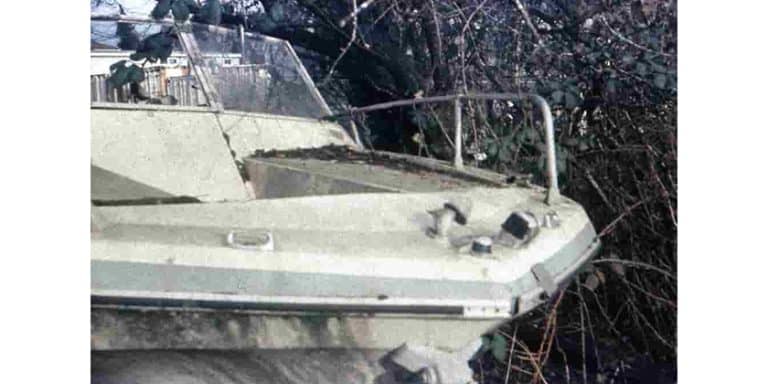Ask Andrew: Below the waterline off-season checks – Part 1
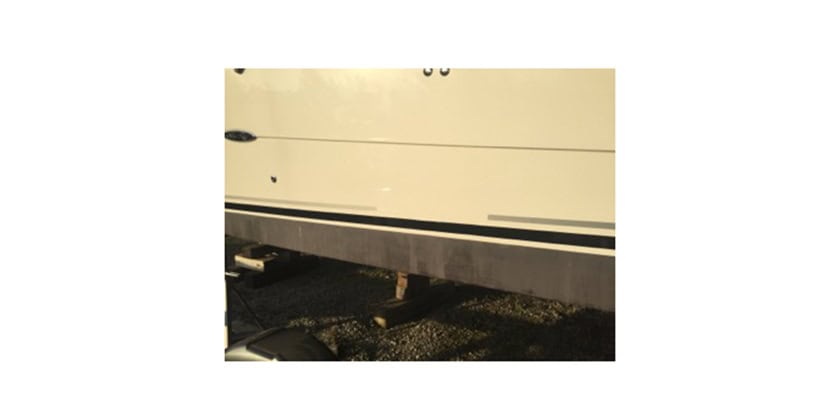
Repairs to hull-striping – removing a damaged section and preparing to splice a new stripe in place
December 18, 2025
The boat is out. It’s resting comfortably at the yacht club, marina, storage yard, or driveway. Winterizing is done. It’s protected with shrink-wrap, a tarp or a custom cover. Mechanically and physically, she’s been put to bed for the winter. So, now what?
Take this time to review all the stuff that you can’t see when the boat is in the water. Here’s a list of items that you may wish to incorporate into your off-season work, and spring prep – and some of these items should be looked at sooner than later:
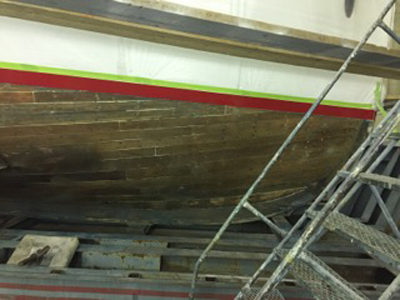
The Hull
All the underwater parts of the boat are now exposed – and now its time to take a close look at a few important parts
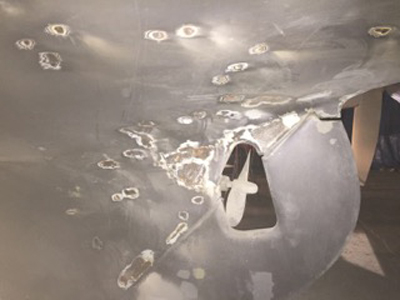
1) Powerwash the hull to remove weeds and invasive species (like zebra mussels.) This is the perfect time to clean the hull so that waterways aren’t contaminated when the boat is dropped in the water in the spring
2) Use a hull cleaner to remove the ‘tea stain’ look on a bare fiberglass hull
3) For boats with antifouling, check the condition of the antifoul and take care of any scraping or sanding necessary to prep the hull for the new application in the spring. Now is a great time to investigate new products and to check on pricing and compatibility
4) Look for dings, scrapes, gouges and cracks. Are any of these new, and do they require repair? Are gelcoat spider cracks expanding? Take stock and line up repair work
5) Lettering, numbering and hull striping – are the registration, license and/or vessel name and port readable? Are hull stripes damaged? Should they be repaired or replaced? These items can be tough to get at when the boat is in the water
Trailer, cradle and stands
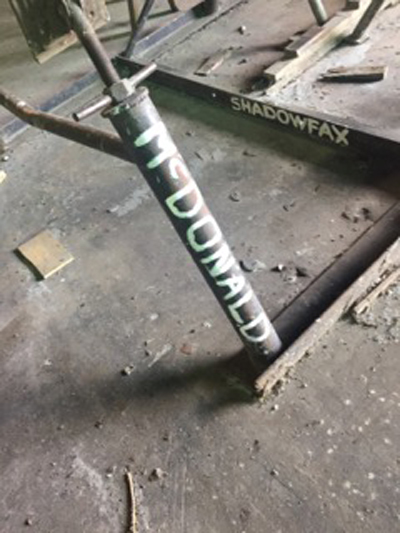
These seldom used and sometimes forgotten parts of boating are now in use – but they should be checked and maintained before they’re used or stored in the spring
1) Trailer lights – do all the lights function appropriately? If not, can the problem be traced to wiring or bulbs? Perform a visual check of the lights and confirm that all work as designed. If there are faults, is it an issue with the vehicle? The trailer lights? Wiring? Bulbs?
2) Trailer tires – tread thickness, sidewalls and air pressure. Will the tires hold sufficient pressure to keep the trailer and boat supported over the winter? Is there any worry that the tire may be flat (or become damaged) when you try to move it in the spring
3) Trailer wheel hubs – is there excessive play in the wheel on the trailer hub? Do wheels turn with ease? Now is a great time to check bearings and apply grease
4) Trailer bunks and rollers – are they in need of repair or adjustment?
5) Cradle pad condition – Do cradle pads require replacement? Do adjustable nuts turn freely?
6) Cradle bolts – on collapsible cradles, are the bolts in good condition?
7) Cradle marking – is your cradle marked appropriately with boat name, owners name and bow/stern orientation?
In the event that repairs aren’t practical immediately, it’s always a good idea to take stock of current condition and to start planning projects, securing budgets and parts, and to begin dreaming of upgrades (Boat Show season is around the corner!).
Enjoy the off-season!

Andrew McDonald is the owner of Lakeside Marine Services – a boat repair/maintenance firm based in Toronto. Andrew has worked in the marine industry for 12 years and is a graduate of the Georgian College ‘Mechanical Techniques – Marine Engine Mechanic’ program. Questions or comments for Andrew? Email him directly via: info@lakesidemarineservices.ca






